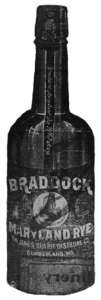
There was a this neat little row home with a hidden speakeasy in the basement for sale in the Philly area, and if I could handle city life, I would have jumped at the opportunity to own a piece of history.
Speakeasies were where it was all at during a time when xtians fought to make the U.S. a dry land.

1. Birth of Jazz
The era of jazz music was born within the walls of speakeasies, largely thanks to musicians like Earl Hines and his Orchestra. During the Great Migration, Black musicians moved from the South to urban centers like Chicago, where speakeasies, often owned by gangsters, provided a platform for their talents. These gangsters became unexpected patrons of the arts, fueling the jazz craze that swept across the Midwest and the East Coast.
2. Code of Entry
Secrecy was paramount in speakeasies. To gain entry, patrons needed to know a secret password, handshake, or knock. Word of mouth was essential in spreading the locations of these clandestine bars. As law enforcement intensified crackdowns, speakeasies adapted by issuing “speakeasy cards”—portable certificates of membership that allowed for guilt-free indulgence in a police-free environment.

3. The Boom of Speakeasies
Prohibition, intended to make America dry, ironically led to a surge in drinking establishments. In New Jersey, the number of watering holes increased tenfold. New York allegedly boasted 100,000 speakeasies, double the number of bars from the pre-Prohibition era. For every bar that closed, three more seemed to open, with basements, garages, and storerooms being transformed into makeshift bars.
4. Corruption and Bribes
Prohibition was marked by rampant corruption. Speakeasy owners often bribed police and officials to avoid raids. Safety precautions included secret knocks and passwords for admittance. Some speakeasies even installed elaborate systems to destroy incriminating evidence quickly in case of a raid.

5. Increased Alcohol Consumption for Women
Speakeasies created an environment where women could drink publicly without facing social stigma. Since any man visiting a speakeasy was already engaging in illicit activities, he was unlikely to criticize women for doing the same. This shift allowed women to enjoy alcohol more freely and contributed to changing social norms around drinking.
6. Bootlegging and Watered-Down Liquor
Bootleggers were the lifeline of speakeasies, supplying them with the alcohol they needed to stay in business. To maximize profits, bootleggers often diluted good whiskey and gin with water. Despite the risks and the often questionable quality of the liquor, speakeasies thrived, becoming vibrant hubs of social life, music, and rebellion during Prohibition.

